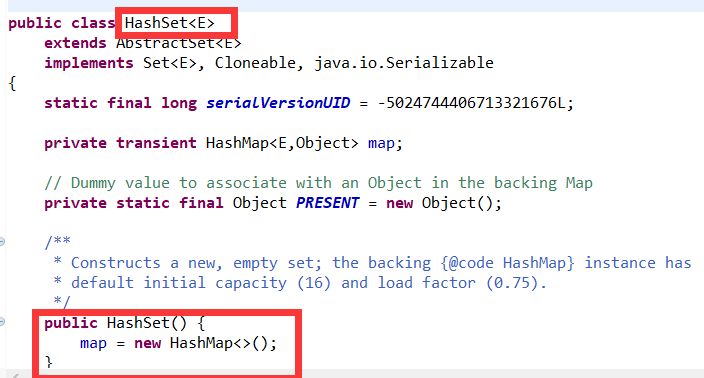不使用任何内建的哈希表库设计一个哈希集合
具体地说,你的设计应该包含以下的功能
- add(value):向哈希集合中插入一个值。
- contains(value) :返回哈希集合中是否存在这个值。
- remove(value):将给定值从哈希集合中删除。如果哈希集合中没有这个值,什么也不做。
示例:
MyHashSet hashSet = new MyHashSet();
hashSet.add(1);
hashSet.add(2);
hashSet.contains(1); // 返回 true
hashSet.contains(3); // 返回 false (未找到)
hashSet.add(2);
hashSet.contains(2); // 返回 true
hashSet.remove(2);
hashSet.contains(2); // 返回 false (已经被删除)
注意:
- 所有的值都在 [1, 1000000]的范围内。
- 操作的总数目在[1, 10000]范围内。
- 不要使用内建的哈希集合库。
分析:
在 Java 源码中,HashSet 其实就是 HapMap 构成的
class MyHashSet {
HashMap<Integer, Integer> map;
/** Initialize your data structure here. */
public MyHashSet() {
map = new HashMap<Integer, Integer>();
}
public void add(int key) {
map.put(key, 1);
}
public void remove(int key) {
map.remove(key);
}
/** Returns true if this set did not already contain the specified element */
public boolean contains(int key) {
return map.containsKey(key);
}
}
/**
* Your MyHashSet object will be instantiated and called as such:
* MyHashSet obj = new MyHashSet();
* obj.add(key);
* obj.remove(key);
* boolean param_3 = obj.contains(key);
*/